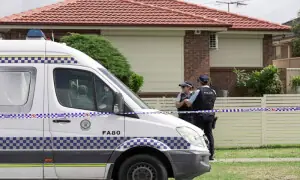Houses, shops damaged as glacial snowmelt result in river overflow
As glaciers in Pakistan are melting at a rapid pace amid a warming climate, the Chitral River overflowed and floodwater inundated multiple houses in the Ayun Valley.
“Pakistan has historically been strongly affected by natural disasters given its extreme and diverse climates and topography. This vulnerability has only worsened with the intensification of climate stressors in recent decades,” International Monetary Fund in its country report said.
The residents appealed to the government to take action, saying that the whole valley could be run over by water if the authorities do not take action.
The ongoing monsoon season has also disrupted the daily lives of the citizens as major cities including rural areas received heavy rainfall while some areas in northern Pakistan received unexpected snowfall.
Several citizens including minors have been killed in rain-related incidents soon after the first spell of monsoon season hit parts of the country.
Pakistan is one of the most vulnerable countries to climate change and abnormal monsoon seasons and glacier melting are almost a regular occurrence in the country.
Extreme monsoon rains exacerbated by a preceding exceptional heatwave in recent months resulted in dry grounds and greater-than-usual glacial snowmelt.
Pakistan climate map

The 2022 floods are the most recent example of Pakistan’s high climate vulnerability.
“Flash flooding occurred in the northern mountains and water slowly accumulated on the southern plains. The floods had become one of Pakistan’s worst-ever natural disasters, surpassing the devastation caused by the 2010 floods,” the IMF stated.
The economic woes of the country have been further intensified by climate change as the floods in 2022 caused extensive human and material damage.
“33 million people (14% of the population) in half of Pakistan’s 160 districts were adversely affected. Over 1,700 people were confirmed dead and 500,000 people were relocated to relief camps. Nearly 2.2 million houses were damaged (one-third beyond repair). The floods inundated 45% of Pakistan’s cropland and killed 1.2 million livestock,” the IMF said.
Pakistan has already felt the effects of global warming during the past two decades.
The country’s three main climate stresses including high temperatures, erratic rainfall, and related disasters have further harshened.
According to the Global Climate Risk Index, large human and material losses make Pakistan rank among the top 10 countries with the highest climate risk worldwide (Eckstein et al. 2021).
Pakistan Main Natural Disaster Types 2000-22

In June, Prime Minister Shehbaz Sharif at a session at the Paris summit claimed that his government had to spend hundreds of millions of dollars from its own resources to give financial assistance to flood affectees all over the country.
Two million houses were either completely demolished or partially damaged, he stated.
Earlier in February, Federal Minister for Climate Change Sherry Rehman stressed collaborative efforts to deal with the multifaceted impacts of climate change.
She was addressing the inaugural session of the 6th edition of ‘The Future Summit’ held under the theme of ‘Prepare for Disruption’.
The world was passing through an accelerated phase of warming with rising temperatures while Pakistan was the hottest place on the planet during the summer for the last three years, she observed.
For the latest news, follow us on Twitter @Aaj_Urdu. We are also on Facebook, Instagram and YouTube.















Comments are closed on this story.